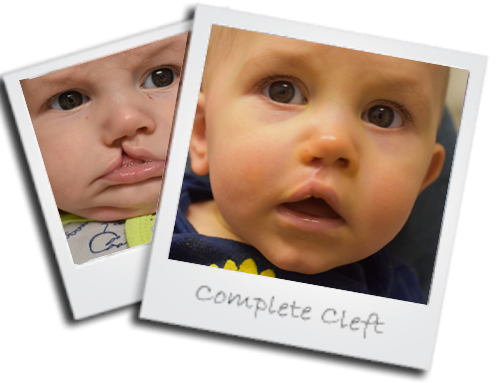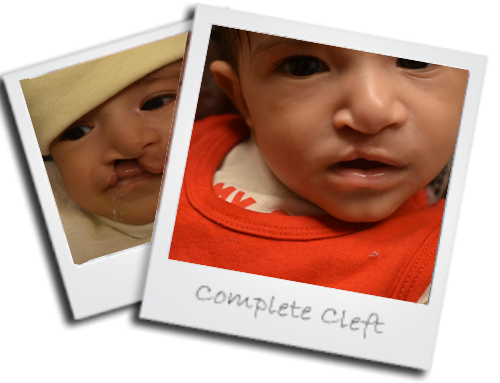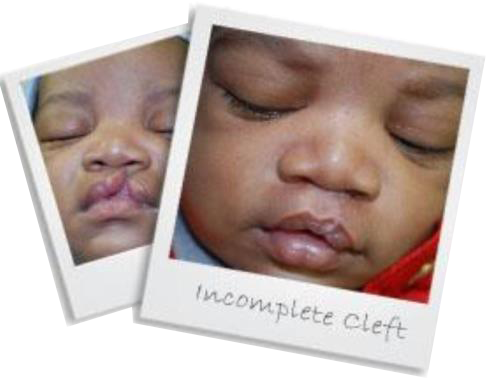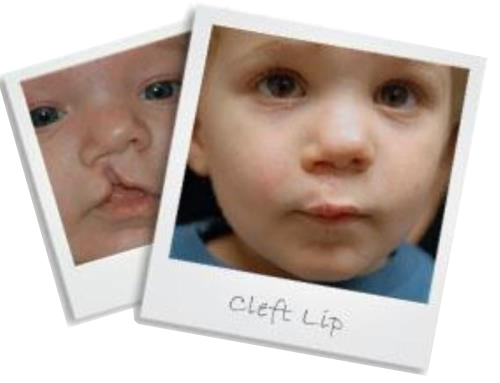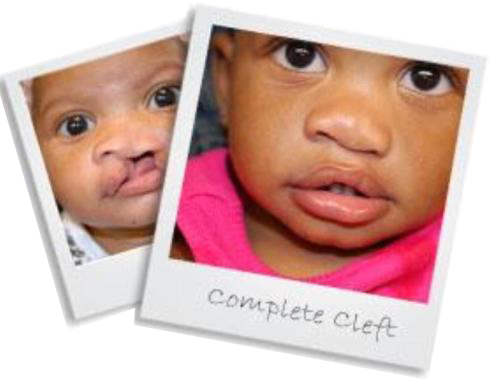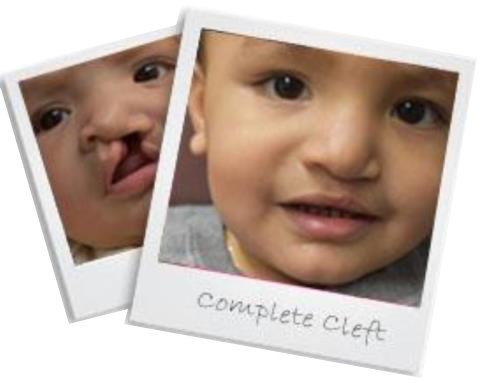Patient Photos
Craniofacial defects such as cleft lip and cleft palate are among the most common birth defects. According to the U.S. Centers for Diseases Control and Prevention, every year an estimated 4,200 babies are born with cleft lip and an estimated 2,500 with cleft palate. Cleft lip and cleft palate are generally caused by a combination of genetic and environmental factors in the early weeks of fetal growth.
Cleft lip
Infants are sometimes born with a separation in the lip. During development, the mouth forms a complete circle, but when the circle is not complete, this separation is known as a cleft lip (cheiloschisis). It can be located on one or both sides of the mouth.
Once a newborn with a cleft is eating and gaining weight, the baby can be evaluated for reconstructive surgery. Cleft lip surgery often is performed at around three months of age. Surgery takes a few hours, and usually does not require an overnight hospital stay. Many patients need several surgeries throughout childhood and later in life to achieve the best result.
Best regards, Alisha M. (Mother)
Cleft palate
The palate is the upper surface inside the mouth, sometimes called the roof of the mouth. It separates the mouth from the nose. When this surface does not come together completely during development, a baby can be born with a separation in this area, called a cleft palate (palatoschisis). Sometimes, cleft lip and cleft palate occur together.
Cleft palate surgeries are more complicated. Because bony and soft-tissue structures in the mouth, face and nasal cavity can be involved, surgeries take longer and require a hospital stay. Surgery usually is performed when the patient is around one year of age. Outcomes may be enhanced later in life through follow-up care and additional surgical management.
.svg?iar=0&hash=F6049510E33E4E6D8196C26CCC0A64A4)

/hfh-logo-main--white.svg?iar=0&hash=ED491CBFADFB7670FAE94559C98D7798)
